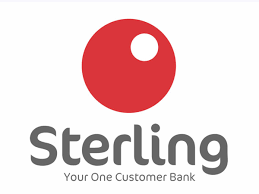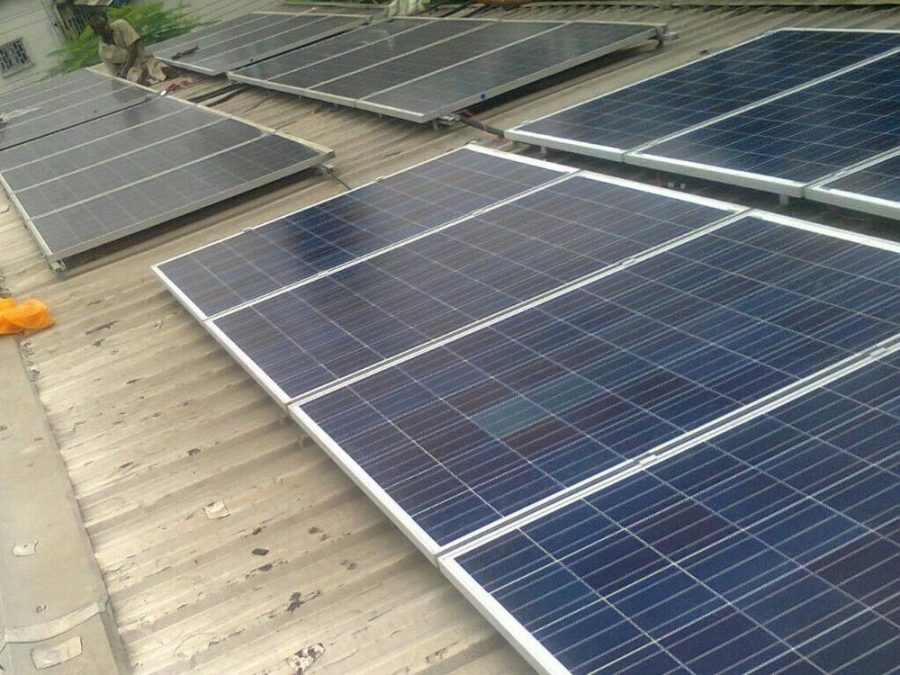The story of Babcock Ranch: how a modern-day “solar city” came to life in Florida

Have you always wanted solar power?
Has the upfront cost been a deterrent to you achieving your dream of owning quality solar power?
Did you believe that only the rich can afford solar?
AWPS Renewable Energy LTD has teamed up with Sterling Bank to make solar power affordable for you. With 20% down and payments spread over 24 months, you can power your home or business with the best solar power you can find..
Check out some of our packages
Luxpower 5kw Hybrid with dual MPPT and real time monitoring. Weco 4.4 Kwh Lifepo4 battery, 3300 watts in tier 1 panels installation included. 5 year warranty on the inverter and battery
N3.2 million outright purchase N623k down N132k per month


Schneider Electric Conext 4048 Inverter Charger, Conext MPPT 60/150 Conext Gateway, 3.3 kw in Tier 1 solar panel and Weco 4.4 kwh lifepo4 battery. Real time monitoring
Outright purchase N3.5 million.
Bank financing is available. 20% down and payment spread over 24 months. Call 08171075866 or +12018154132.



In Lagos, the culture of noisy back-up generators is so ingrained there’s unspoken etiquette about showing consideration for neighbors about how long you leave yours on late into the night. Of course, noise is just one of many of the drawbacks of using generators, especially when the electricity supply is such that the tag “back-up” is something of a misnomer.
Nigeria is one of many developing countries where electricity is unreliable and the impact of using generators to supplement (or essentially replace) grid-based supply is what the International Finance Corporation explores in a report titled The Dirty Footprint of the Broken Grid.
The fleet of generators in the 167 developing countries modeled (excluding China) is estimated to have a total capacity of 350–500 gigawatts which is the equivalent of 700–1,000 large coal-fired power plants. These generators are spread over 20 million to 30 million individual sites and deliver an estimated 100–170 terawatt per hour of electricity every year which is a substantial portion of electricity service in some regions. The six biggest users of back-up generators are: Nigeria, India, Iraq, Pakistan, Venezuela, and Bangladesh.
In western Africa, private generators provide the equivalent of 40% of what’s generated by the grid. In the subregion’s largest economy, Nigeria, the study conservatively estimates the installed capacity of generators is between 15-20 GW compared with a grid capacity of 5-15 GW.
And this isn’t cheap for the home owners and local businesses forced to rely on generators. Spending on diesel and petrol for generators is a whopping $30 billion to $50 billion a year. This comes with an average use cost of 30 cents per kWh for fuel alone which is around double the average cost of grid electricity.
Overall, the full cost of using generators is estimated to be between 40 cents to several dollars per kWh particularly for those in the most remote locations due to logistics and transport expenses. In Sub Saharan Africa, one out of every five liters of diesel and petrol is used in a back-up generator.
This past week at the United Nations General Assembly there has been a lot of serious deliberation about our global climate crisis. One of the common themes is how Africa is responsible for a tiny percentage of causes of climate change but will face a disproportionate impact. One of the ironies for African countries with poor electricity supply and heavy generator use is that these petrol and diesel machines are “substantial contributors to environmental and health burdens.”
As Quartz Africa has written before, generators are responsible for health-damaging emissions of fine particulate matter, sulfur dioxide, nitrous oxides, carbon dioxide and other pollutants that contribute to climate change. The report says in Sub-Saharan Africa, nitrous oxides from back-up generators account for 15% of all nitrous oxides emitted in the region, and particulate matter emissions are equal to 35% of emissions from all motor vehicles.
There are also major safety issues particularly for low-income residential areas in cities where owners have small, inflammable petrol generators in proximity to their apartments or shared living spaces.
There is some hope that as developing countries economies improve and grow distributed solar and storage technologies can offer a superior and effective alternative to the back-up generators.
Sign up to the Quartz Africa Weekly Brief here for news and analysis on African business, tech and innovation in your inbox



Balikis Muritala lives in Ajegunle, Lagos State, fries and sells yam for a living, makes less than $2 a day, and finds it hard to send her children to school.
It’s almost impossible for her to meet up to the school fees demand of $22 per term (a term is 3 months). Neither she nor her husband makes enough. Life is hard for them, as it is for most people in Africa’s most populous nation and the poverty capital of the world.
Nigeria, Africa’s biggest economy, is bedevilled by an alarming rate of out-of-school children (10.5 million) and recently tagged the Poverty Capital of the World by World Poverty Clock, estimating that 91.5 million of her people live below the poverty line as at March 2019.
Despite its huge deposits of natural resources and human capital, the country is plagued with underdevelopment, corruption and an alarming level of illiteracy. The commercial capital city, Lagos, surrounded with coastal lines, also faced a huge waste problem. According to the state government, residents dumped 450,000MT plastic wastes into ocean bodies annually causing environmental pollution, flooding, posing serious health risks to human beings.
Muritala’s family is one of the many Nigerian families who can hardly send their children to school.
Members of the PTA at Morit Intetnational School after a meeting with the NGO, African CleanUp Initiative (Facebook/Patrick Mbaramba)
To solve this problem, Morit International School, a private school in Ajegunle teamed up with an NGO, African CLEANUP Initiative, to allow parents who are unable to afford school fees for their kids pay with plastic bottles through an educational solution called RecyclesPay Educational Product.
RecyclesPay is an initiative created to provide solutions to educational, environmental and climate issues around the world. Alex Akhigbe, the executive director of ACI, says it is one of the ways of giving back to the community. The NGO, according to Akhigbe, serves as a linkage between the school and the recyclers with the aim of getting 10,000 children off the street next year.
Speaking on the idea of exchanging bottles for her children’s access to school, Mrs Muritala says that at first she felt shy picking bottles off the road and neighbouring streets. “Before now I used to feel shy picking the pet bottles. But now, I have seen value in those waste plastic bottles.
“Paying school fees is not an easy thing for me and the pet bottle idea has actually reduced this burden for my family. We have no stress running after school fees anymore, we now use little profit we get from the yam to feed and take care of the household,” she says.
She also explains how her customers help her in getting the bottles and in exchange for some extra pieces of yam.
Hajia Ajara Mohammed, a housewife, says the pet bottle initiative has helped her to cushion the cost of school fees on her family.
“We are grateful to the school for this initiative especially some of us with more than two children.”
How they get the pet bottles – indirectly solving environmental challenges
Most of the parents we talked to said they have inculcated the habit of picking waste bottles around their environment to help pay their children’s school fees.
“We pick bottles off the road, collect some from our neighbours and save them for the school. My children also help sometimes. My family has imbibed the habit of keeping pet bottles after we empty the content. My husband also assists,” Hajia Mohammed tells Business Insider SSA by Pulse in Pidgin.
Mrs Muritala says, “When they first started it [the initiative], it did not look ideal (the act of picking up the bottles seemed uncomfortable to her), but later I joined them when I saw other parents making use of the initiative instead of looking for school fees for their children.
“Most of my customers help me with bottles. I now give them extra pieces of fried yam or potato for helping me out.”
She says she sometimes fights people for the pet bottles around her community because she has realised their importance.
The initiative is coming at a time when global attention is turning to waste pollution amid environmental concerns endangering nature and human existence.
UN says more than 8 million tonnes of plastic waste end up in the ocean
According to recent research conducted Intergovernmental Science-Policy Platform on Biodiversity and Ecosystem Services (IPBES), plastic pollution has increased tenfold since 1980.
Last year, the United Nations called for proper disposal of plastic waste, saying more than 8 million tonnes end up in the ocean.
António Guterres, Secretary-General of the United Nations, during the World Environment Day 2018, said a healthy planet was essential for a prosperous and peaceful future. In the same year, the United Nations and the European Commission jointly hosted an event at the United Nations HQ to launch Global Plastics Platform to fight plastic pollution together.
Ajegunle school where a pet bottle is N1 and more parents can pay school fees
Patrick Mbamarah, director at Morit International School, narrates how the idea began and how the school is contributing to reducing the rate of out-of-school children in the country.
“In the past, I used to have challenges collecting school fees from the parent but later realised that these parents genuinely did not have the money and want to make sure their children are educated.
“This development made us (the school management) after meeting with the parents and teachers association to key into the recycling waste initiative in exchange for school fees with African Clean Initiative (ACI).”
He says because of the initiative, the school is oversubscribed as a naira is equal to a bottle and more plastic bottles means more school fees.
https://www.pulse.ng/bi/strategy/the-inside-story-of-a-school-in-lagos-where-students-pay-school-fees-with-plastic/n2nlzwc
May 30, 2019 10.17am EDT
Author Samuel Ayokunle Olowosejeje
Research fellow, University College Cork

Lengthy power cuts are pretty much a daily experience in Nigeria. The country’s epileptic power supply has been identified by businesses as the second biggest obstacle to doing business in the country, after a lack of access to finance.
This unreliable power supply is a major hindrance to Nigeria’s economic growth. It also costs the country an enormous amount of money. Quoting Nigerian government data, the International Monetary Fund (IMF) says that a lack of access to reliable electricity costs Nigeria an estimated US$29 billion a year.
The situation comes with environmental and health risks, too. Many individuals, households and organisations have resorted to fossil-fueled generators. Nigerians spend an estimated US$14 billion a year on small-scale generators.
The country’s current power generation capacity, according to the IMF, is about 13,000MW. But often electricity generated and transmitted is below 4,000MW/hour. Nigeria’s generation capacity is comprised of gas-fired and hydro power stations. However, the system operates well below capacity. This is partly because of problems with gas supplies to fuel the power stations.
That’s where solar power comes in. It holds enormous promise for addressing Nigeria’s unreliable energy supply. Estimates suggest it could increase the availability of electricity to almost 80 million people who currently have none. It could also diversify the country’s energy portfolio. Most of this promise is based on the fact that solar-based generation capacity can be built up far quicker than traditional power plants. It can also be built in chunks, starting small and adding on the capacity as time goes on.
Solar can also be connected to a country’s electricity grid. Or it can be run off the grid. This makes it the most practical option for improving access to electricity across Nigeria. It can also be used on its own, or as part of a hybrid mix with other technologies.
Cost-effective and reliable
I conducted a case study with some colleagues to ascertain the economic value of solar power to Nigeria. We calculated that a transition to solar-based energy could reduce the country’s electricity costs by up to 132%.
These savings are based on the current cost of running Nigeria’s electricity grid supported by petrol or diesel generators used by businesses and households.
The other advantage of going solar would be its impact on the cost of generating and distributing electricity. Solar costs are coming down. They have become cheaper than the fossil fuel alternatives, according to the International Renewable Energy Agency. The agency, an intergovernmental organisation, supports countries’ transition towards sustainable energy.
Nigeria’s electricity system is saddled with a huge gap between the cost of generating electricity and the tariffs it receives. This gap was estimated at $2.4 billion in 2015-17. The tariff gap, says the IMF, can be closed by reducing the cost of generating and distributing electricity, and through increasing the tariff by at least 50%.
The huge gap between the tariff and operating costs has meant that Nigeria’s privatisation of its electricity sector has not delivered improvements in the availability of reliable electricity. This is in part because the electricity distribution companies inherited a derelict infrastructure from the Nigerian government through the National Electric Power Authority, which was unbundled in 2005 and privatised in 2013. They cannot afford to upgrade this.
It’s also because power consumers are not willing to pay for an unreliable electricity supply.
Its potential in application
Solar-based energy, especially when done on a large scale, can contribute to reducing the cost of generating and distributing electricity in Nigeria.
Renewable technologies could also help to develop an electricity market where those producing surplus energy can sell it to those who have a shortfall. Currently, such a market is limited by the conventional grid systems. These are designed based on centralised big power plants and a one-way flow of energy from the power plants to the customers.
Also, the design of conventional electricity grids is such that they are only stable to the extent that demand and supply is well balanced. They are therefore not well suited to the intermittent supply of electricity that renewables generate. The solution to these limits of conventional grids could be micro-grid clusters that can source energy from a variety of independent power producers.
The potential for building solar units in small chunks and adding more capacity as time goes on makes solar-based power generation ideal for plugging the gaps in Nigeria’s energy requirements. It is the most technically feasible and cost-effective solution to the challenge of extending electricity to 80 million people who are currently without access to energy. Solar, in combination with other technologies, can reduce the cost of doing business in Nigeria.

Batteries are critical for our clean energy future. Luckily, their cost has dropped so low, we might be much closer to this future than we previously thought.
In a little less than a year, the cost of lithium-ion batteries has fallen by 35 percent, according toa new Bloomberg New Energy Finance report. Cheaper batteries mean we can store more solar and wind power even when the sun isn’t shining or wind isn’t blowing. This is a major boost to renewables, helping them compete with fossil fuel-generated power, even without subsidies in some places, according to the report. Massive solar-plus-storage projects are already being builtin places like FloridaandCaliforniato replace natural gas, and many more are on the way.
The new battery prices are “staggering improvements,” according to Elena Giannakopoulou, who leads the energy economics group at Bloomberg NEF.Previous estimatesanticipated this breakthrough moment for batteries to arrive in late 2020, not early 2019.
According to the report, the cost of wind and solar generation is also down sharply — by between 10 to 24 percent since just last year, depending on the technology. These numbers are based on real projects under construction in 46 countries around the world.
The lower battery prices have big implications for electric cars, too. There’s a key cost threshold ofabout $100 per kilowatt hour, the point at which electric vehicles would be cheap enough to quickly supplant gasoline. At this rate, we’ll reach that inless than five years.
Now that cheap batteries are finally here, we’rewell on our way to electric modes of transportationand always-on renewable energy — andnot a moment too soon.
What’s driving the plunge? Giannakopoulou cites “technology innovation, economies of scale, stiff price competition and manufacturing experience.” Other storage methods,like pumped hydro, still account for the vast majority of energy storage capacity, but lithium-ion batteries are much more flexible and don’t require specific locations or environmental conditions to work. Like everything in the built environment, lithium-ion batteries also require mining and manufacturing. There’s still a chance thatsome new exotic battery technologywill quickly supplant lithium-ion, but its ubiquity and — now — cheapness will be hard to beat.
Electric vehicles will become cheaper to own and operate than gas ones. In places like California, Texas, and Germany,electricity prices have occasionally dropped below zero— a sign that the grid wasn’t yet ready to handle the glut of renewable energy produced there. Now, more of that cheap power will be stored and passed on to consumers. This could be the moment when renewable energy starts to shut down fossil fuel for good.
By Tom Kenning Mar 27, 2019 11:26 AM GMT 0
Tesfai Ghebrehiwet, director of Renewable Energy, Ministry of Energy and Mines, has praised the two mini-grids. Credit: Solarcentury
Solarcentury has commissioned two solar-storage-diesel mini-grids in rural communities in Eritrea that are far away from the grid and have relied purely on diesel power until now.
The hybrid power systems at Areza (1.25MW) and Maidma (1MW) took eight months to build, with a combination of solar PV, lithium-ion batteries from US firm Tesla, and backup diesel generators from Caterpillar.
The sites, providing 24/7 and cheaper power to 40,000 people and businesses, will be operated by the Eritrean Electricity Company, whose staff have been trained by Solarcentury.
The project was funded by the Eritrean Government with support from the European Union Delegation to the State of Eritrea and the United Nations Development Programme.
Solarcentury project manager, Theo Guerre-Canon, said: “The community are at the heart of this project. Our hope is that access to reliable electricity will support wider economic growth in the region, and social development. For example, there’s a clinic in Areza that will now benefit from uninterrupted electricity. The Eritrean project presents a model for rural electrification, and Solarcentury is in discussions about similar projects across Africa.”
Tesfai Ghebrehiwet, director of Renewable Energy, Ministry of Energy and Mines, added: “Solarcentury were very focused, and kept the project progressing at a quick pace in remote conditions. The Ministry of Energy and Mines are very pleased with the process and results.”
When the project was first announced, PV Tech spoke to Daniel Davis, director of hybrid power systems at Solarcentury, about the opportunities and challenges in off-grid renewables in Africa.
https://www.pv-tech.org/news/solarcentury-completes-pv-mini-grids-in-eritrea-with-tesla-batteries
Bola Bamigbola, Osogbo
Three members of a family residing at the Olorisaoko Compound, Osogbo, Osun State, were found dead in their home in the early hours of Thursday.
Although their death was blamed on many factors, including the last meal ate by the late police Sergeant Mary Samuel and her family, but security sources said the victims might have been killed by generator fumes.
A security source, who pleaded anonymity, told our correspondent that the late Samuel had a torch in her hand when security men gained access to her apartment, adding that she must have slumped while heading towards the direction of the kitchen, where a generator was kept.
Others found dead in the apartment located on the ground floor of a storey building behind the Osogbo Central Mosque apart from Samuel, were her daughter, Abigail, and her grandchild, whose name could not be ascertained as of the time of filing this report.
Another victim, identified as Jumoke, said to be the eldest daughter of Samuel, it was learnt was revived at the Ladoke Akintola University of Technology Teaching Hospital, Osogbo, before she was transferred to the Obafemi Awolowo University Teaching Hospital, Ile-Ife for further treatment.
According to findings, the husband of the deceased is also a policeman and is presently serving outside Osun State.
An eyewitness said the attention of people in the neighbourhood was drawn to the apartment of the deceased by the cry of her four-month old granddaughter few minutes before 7am.
A neighbour of the deceased said,